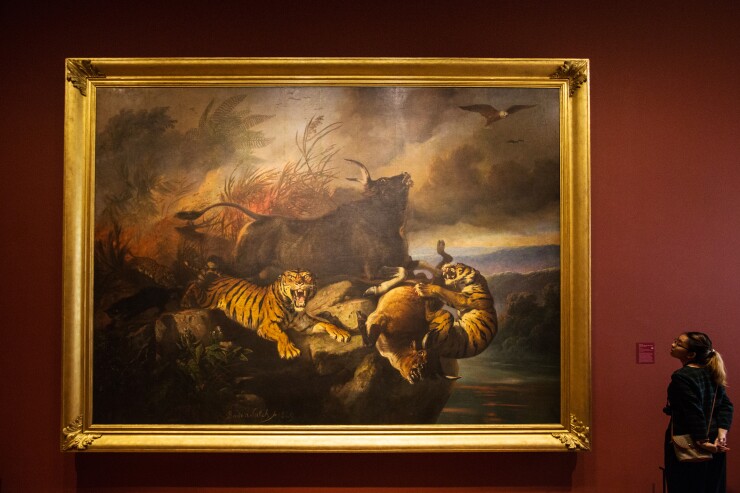The credit market’s insatiable appetite for yield is making it easier for art collectors to turn their prized possessions into a piggy bank.
With interest rates near zero and asset prices continuing to break records, lenders say they’re seeing more interest from wealthy art buyers who are willing to pledge paintings as collateral in exchange for cash that they can sink into other investments.

And increasingly, hedge funds are eager to buy packages of art-backed loans with yields in the range of 8%, according to Freya Stewart, CEO of specialty lender The Fine Art Group, which lends against pieces by contemporary artists such as David Hockney or Peter Doig.
There is a “huge amount of appetite” from investors for debt products backed by art, Stewart says. “The big credit funds out there have got a lot of capital that they need to invest.”
Fine-art lending is a small, but fast-growing niche of the credit world that shows the rise of alternative investing and the willingness of hedge funds to hunt returns in all corners of the world. The industry proved popular during the depths of the pandemic as ultra-wealthy individuals tapped art collections as a source of cash when other assets were frozen or plunging in value.
Bank of America said its art-lending business grew by about 15% year over year at the end of June, representing an increase of $1.1 billion. Sotheby’s financial services division has seen its loan book increase by almost 50% since 2018 and originated more than $2.5 billion of loans since then.
“We saw a pretty good year in terms of growth in the art book for clients who were creating liquidity to take advantage of the volatility that was created by the pandemic,” says Cynthia Sachs, a managing director at alternative lending platform Yieldstreet, which makes loans and packages them for investors.
Yieldstreet’s Diversified Art Fund, started in 2019, holds loans backed by $156.3 million worth of post-war and contemporary art. The fund has a loan-to-value ratio, a risk metric that compares debt to the market value of the asset, of about 49%.
“There is great untapped capacity,” says Madeline Lissner, head of Sotheby’s Financial Services. “There are many collectors who are already leveraging their personal collections as a wealth-building strategy.”






